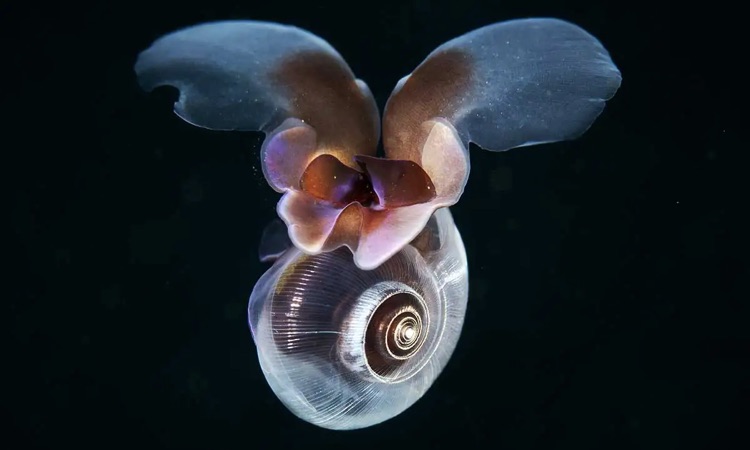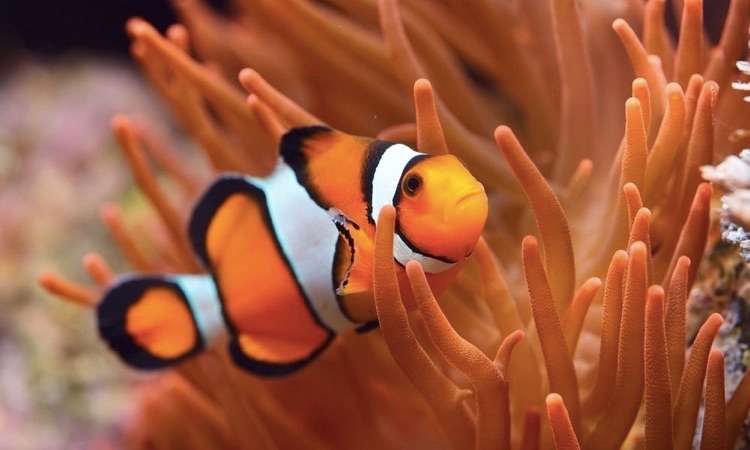The mighty giant trevally (Caranx ignobilis) is an awe-inspiring, voracious creature that inhabits the Indo-Pacific region. Also known as lowly or barrier trevally, giant kingfish and ulua. It has become a favored game fish among anglers due to its strength and ferocity.
However, while its flesh is generally palatable, certain specimens are ciguatoxic and may result in sickness if consumed by humans.
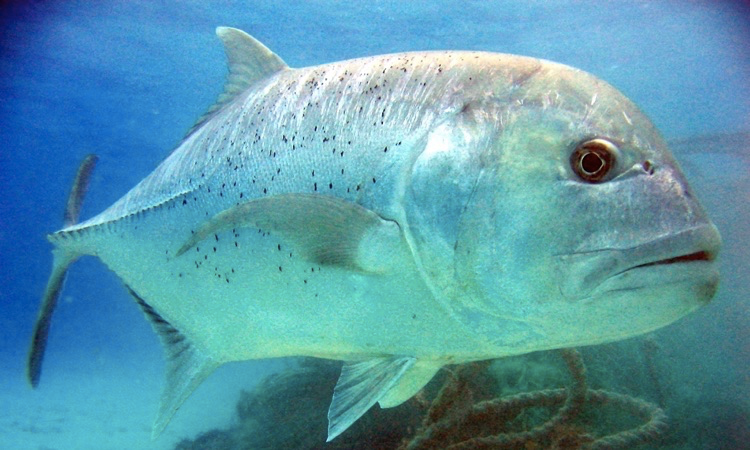
Quick Facts
- These fish are no joke. Their extreme aggressiveness has led to instances where they aggressively head-ram sharks, resulting in death or physical harm for the shark. If approached by a curious fish, one can expect an unrelenting bite as their first instinct.
- Apex predators: This species is renowned for its large size and aggressive behavior, allowing it to consume almost any creature that crosses its path while having few actual enemies.
- Cunning hunters: Not only do they rely on their size and speed to catch prey, but these fish are well-known for ambushing unsuspecting animals. Even using other predators like sharks as a means of intimidating smaller creatures.
- With their remarkable jumping abilities, these hefty fish have been known to propel themselves out of the water and seize unsuspecting birds near the shoreline. It’s an incredible feat that they can use as both a source of sustenance and entertainment.
- Swift swimmers: This species is a nimble fish that can travel at an impressive pace, reaching speeds of 37 miles per hour or higher!
Giant Trevally Appearance
The giant trevally, aptly named for its massive size and fierce hunting tendencies, is a sleek silver-grey creature with an even darker head and back. Males that grow longer than 20 inches tend to be jet black in colour. Their gills have special rakers – bone or cartilage projections – which grab tiny organisms from the water as food. Interestingly, they lack scales on their undersides until just before the pelvic fin region begins.
This species has an array of fins. From the spiny dorsal, soft dorsal and caudal fin to two pelvic and pectoral fins. Typically grey or black in color, fish residing in turbid coastal waters may have yellow tinted fins with the anal fin being most vibrant.
This fish is the biggest within its genus, typically averaging 33-39 inches in size but able to reach up to 67 inches. The weightiest specimen on record was a hefty 176 pounds; however, adults can be as light as 28 pounds.
Habitat & Distribution
The giant trevally can be found living in the Indo-Pacific region. A vast expanse of territory extending from the Indian Ocean to the western and central Pacific, including tropical islands such as Hawaii, Australia’s north coast, Africa’s eastern shoreline and Japan. A comprehensive list of 80 countries and locations where this species is present can be seen below.
Giant trevallies favor the warmth of tropical, brackish waters between 33 to 617 feet deep and are typically seen lurking around reefs, tidal flats, clear lagoons, and channels.
While they rarely venture into estuaries, more mature individuals tend to migrate farther offshore in search of deeper waters. This species generally prefers a solitary lifestyle but congregates for mating or hunting on rare occasions.
Conservationists remain uncertain about the global population of this species. Although they have been labeled as Least Concern by the IUCN since 2015, there are signs that their numbers are in decline in Hawaii. To discover a comprehensive list of endangered species, see this article.
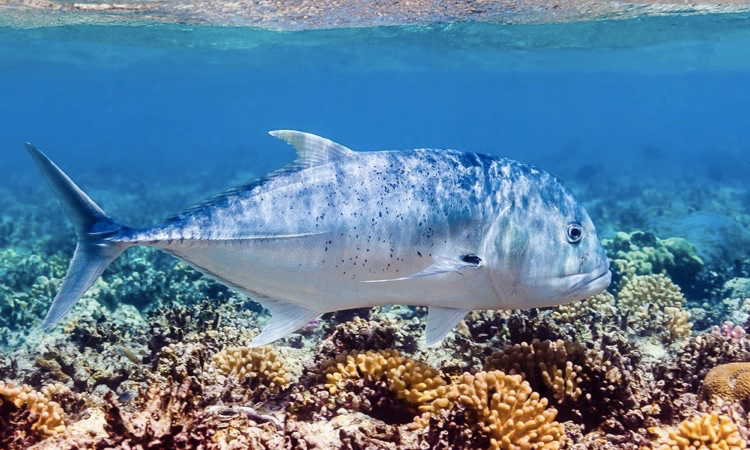
Giant Trevally: Evolution and History
During the Mid-Eocene Epoch (spanning from 56 to 33.9 million years ago), fossils of Caranx, a variety of modern Perciform lineages, were discovered in sedimentary deposits primarily composed of otoliths (inner ear structures) found in shallow brackish or marine waters.
A study revealed that there is inadequate genetic exchange between the three distinct populations of Caranx ignobilis scattered around the world.
From Central Pacific to Western Indian Ocean, and from Western Pacific to Eastern Indian Oceans. These groups share striking resemblances with another predator fish named Caranx melampygus in Indo-Pacific region.
In 1775, the Swedish naturalist Peter Forsskål identified and obtained a holotype of the giant trevally from the Red Sea. This fish has often been mistaken for its Atlantic cousin, crevalle jack. However, no genetic connection between them has yet been found.
In 1801, the renowned French naturalist Bernard Germain de Lacépède introduced this species’ genus Caranx to the world. Initially, it was intended for his crevalle jack.
Since its discovery, the Gnathanodon genus has grown to contain more than one hundred species. Unfortunately, most of those were later found to be invalid junior synonyms.
This genus also absorbed a considerable number of other genera and is now primarily related with Caranx. Currently it holds only one species–the golden trevally which used to belong in the Caranx family.
Predators and Prey of the Giant Trevally
Giant trevallies are highly voracious predators that feed on a variety of creatures. They may hunt singly or in packs, and sometimes even join forces with members of other varieties of trevally.
Furthermore, these powerful hunters will utilize the aid of sharks to ambush smaller prey fleeing from mon seals or other apex predators. Owing to their colossal size, Giant Trevallies are considered an apex predator amongst most ecosystems.
Depending on where they live, these fish can be active during the day, twilight or night. Off the coast of South Africa for instance, you will find them more likely to strike diurnally and crepuscularly whereas around Zanzibar and Hong Kong their nocturnal hunting behavior is predominant.
What Do Giant Trevallies Eat?
These sea creatures have a diverse diet and will feed on whatever is most available at the time, such as crustaceans, cephalopods, mollusks, eels and smaller fish.
Moreover, they can make astonishing leaps out of the water to catch feathered prey! The larger ones even hunt other predators like tuna or mackerel while juveniles consume anchovies and sardines which are much tinier in size.
What Eats Giant Trevallies?
Not only do humans threaten giant trevallies, but so do sharks. Nonetheless, these fish are strong and daring enough to fight back by ramming their heads into the shark’s body. A powerful move that can be fatal for the creature!
Reproduction and Lifespan
Giant trevallies are loners for most of the year, pairing up only during their breeding season. At about three to four years old and 24 inches long, these majestic creatures reach sexual maturity. Their ideal time for spawning is usually in warmer months but can vary depending on geographic location and lunar cycles.
For example, the spawning season for fish off the coast of southern Africa begins in July and runs through March, with a peak between November and March.
Hawaii has an earlier spawn window from April to November, peaking during May and August. Contrastingly, Philippine waters have a much shorter period spanning December to January – although they may experience their highest rates in July.
To reproduce, schools of around 100 males and females convene near reefs, reef channels, or offshore banks. As several dark-colored males pursue a single silver female, she ultimately pairs up with one male before they both swim down to the ocean floor.
During the breeding season, male and female fish congregate in large numbers here to release their eggs and sperm. It is unclear how many thousands of eggs a single female releases at once – with eyewitness accounts suggesting that it could be up to 10,000! After mating occurs between two individuals, they will often look for other partners during the course of this special period.
After around 28 hours, the eggs hatch to become freely-floating larvae that drift for a month or so until they can grow big enough and swim against the current. With luck, these fish may live up to 25 years of age. However, most don’t make it beyond their larval or juvenile stages.
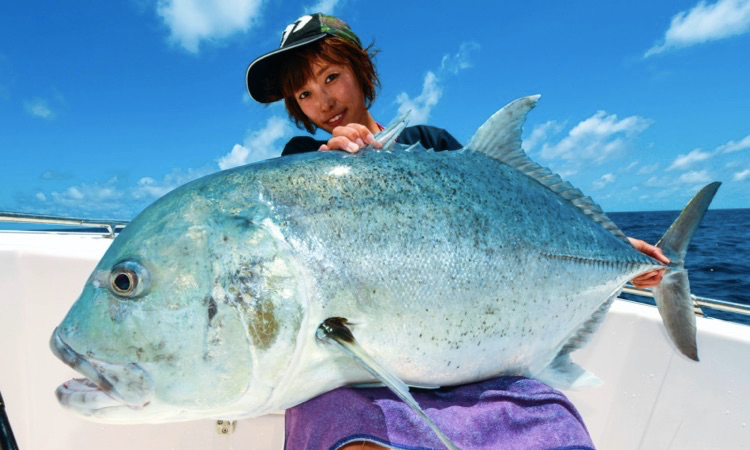
Fishing and Cooking
The giant trevally is a much sought-after sport fish and an essential commercial fish. For Hawaiians, it has always held deep cultural value. However, its population numbers have been deteriorating quickly leading to drastic drops in landings figures.
Every year, commercial fishermen in Hawaii haul 10,000 pounds of fish. From 1997 to 2007, the annual catch around Asia ranged from 4-10 thousand tons – procured through hook and line fishing as well as gillnets and other traps.
Sport anglers appreciate this fish for its size and vigorous spirit. It can be caught year-round, with the peak season being during the warmer months which depend on region. Be it live or dead bait, lures – any of these will help you to catch one of these remarkable creatures!
Anglers seeking the ultimate in bait should explore squid, octopus, and a wide array of fish varieties.
Poppers and soft plastic lures are typically considered the best choice for success. But don’t forget to try your luck with jigs, bibbed plugs, spoons, minnows too! And let’s not forget about saltwater flies. They’re also an effective lure option worthy of exploration!
With a mild, yet fishy taste and firm flesh that can become rubbery if overcooked, giant trevallies make for delicious eating.
For the best results in bringing out their unique flavor, try one of these recipes for oven-baked or pan-fried trevally fillets. This amazing species is sure to be an inventive addition to your table!
Regrettably, some of these fish contain toxins that are harmful to humans. Therefore, use caution when selecting this type of seafood as a meal option.


